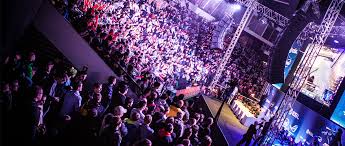By Paul Nicholson
August 11 – There is a parallel sports world taking place to that of the traditional football world. It is a world that has more active participants than football has registered players, generates billions of dollars and is now filling stadiums full of fans to watch its players.
“For many their first sports experience of life will be an e-sports event,” said Kim Rom, CEO and founder of Level99, a creative marketing agency focused on the gaming space.
Rom quotes stats from the US where 96% of 11-year-olds have a mobile phone, 83% have their own TV, 75% have a tablet, 71% have a console and there are on average 189 TV channels to choose from. If those stats aren’t a wake-up call to digital marketers, the stat that 53% of 6-year-olds have a mobile phone should be.
As Rom says, these numbers change our perspective. “They (the kids) are always on and they expect to participate. You meet your friends and your opponents online. They are growing up in a world where e-sports has never not been normal.
Rom was speaking at the International Football Arena conference in Berlin that was themed ‘Football’s digital transformation’. Nowhere else can that evolving transformation be seen at the leading edge than in the e-sports world where the games evolve at a pace that is matched by the speed and demands of the gamers.
EA Sports’ FIFA games, iterated every year to huge consumer take-up, is the shiny face of the e-sports football world. But there is a much deeper revolution taking place that is edgy, connected and has players and teams, is now filling stadiums and even has players’ agents (real physical ones).
Jens Hilgers, CEO and founder of Turtle Entertainment, talks about “competitive, networked multi-player videogames” with several individuals networked and playing against or with each other.
Hilgers says that e-sports game are “more exciting than the real thing because they are changing – not many things have changed in soccer over the last decade. Games have a significantly higher strategic depth and thereby storyline. Videogames are highly accessible making it a very participatory sport. You can engage on your own at any time.”
And e-sports are not just about individuals in bedrooms all over the world staring at monitors. Hilgers says that at ESL One 2015 in Cologne, 15,000 tickets were sold, 27 million unique users watched on the internet over the weekend with 2 million watching in high definition.
So where is this heading? Hilgers says they are “going to traditional TV. Our audience are not there any more, we get that already, but the big sponsors and the big brands are. And we will fill more stadiums more often with more people.”
Football has taken steps into the e-gaming world – EA Sports being the corporate face of what has been a very corporate-looking involvement. But Hilgers and Rom intimate football has not entered as a full participant and is not understanding the opportunity or culture. The fully immersed experience is a lot deeper, integrated and consuming – something that clubs are reluctant (afraid?) to engage in. The flip side for clubs is that if you don’t play you can’t win the big prizes.
The motivating factor for football to go to the next game level will likely (and perhaps sadly for everyone) be money. E-sports fans pay on average $200 per month to consume their sports, compared to $50 for the non-digital sports fan.
And, like football, it is a world where the players can earn big money with one 16-year-old having already racked up $1.6 million in prize money. Little wonder IMG opened up an eSports division with the acquisition of player agency WME.
If you don’t want to play you can always bet on the games. There are now 20 betting platforms making markets for the big tournaments. The late Gil Scott Heron’s famous line that “the revolution will not be televised” has resonance.
Contact the writer of this story at moc.l1745694347labto1745694347ofdlr1745694347owedi1745694347sni@n1745694347osloh1745694347cin.l1745694347uap1745694347

